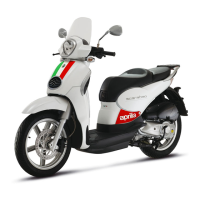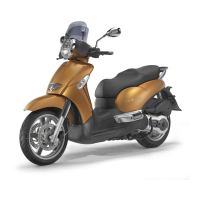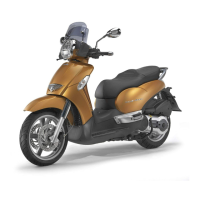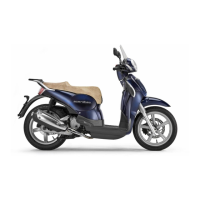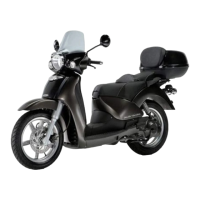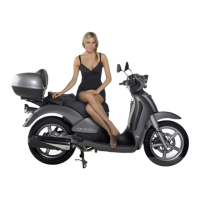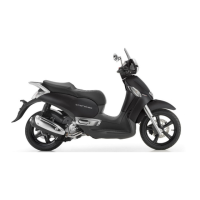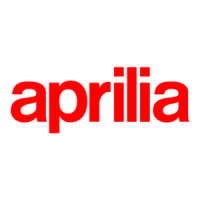
Do you have a question about the APRILIA SCARABEO 50 I.E 100 4T - 2002 and is the answer not in the manual?
| Year | 2002 |
|---|---|
| Manufacturer | APRILIA |
| Displacement | 49.9 cc |
| Ignition | CDI |
| Transmission | Automatic |
| Front Suspension | Telescopic fork |
| Rear Suspension | Single shock absorber |
| Rear Brake | Drum |
| Model | SCARABEO 50 I.E 100 4T |
| Engine Type | Single cylinder, four-stroke |
| Bore x Stroke | 39.0 mm x 41.8 mm |
| Cooling System | Air |
| Fuel System | Carburettor |
| Starting System | Electric and kick |
| Front Brake | Disc |
| Max Power | 3.5 HP (2.6 kW) at 7, 500 RPM |
Symbols alert to potential risks of injury or provide operational guidance.
Read manual, ensure fitness, avoid substances for safe operation.
This section introduces safe driving practices and vehicle operation.
Ensure driving license, age, documentation, and get to know the vehicle first.
Maintain good physical condition and avoid substances that impair driving.
Rigorously observe all road signs and national/local road regulations.
Avoid abrupt movements, obstacles, and maintain correct posture and control.
Stay attentive, avoid distractions, use specified fuels/lubricants, and check levels.
Avoid illegal modifications; they invalidate warranty, incur penalties, and loss of insurance.
Always wear a properly fastened helmet and protective clothing for safety.
Explains the function of warning lights and dashboard gauges like fuel, speed, and temperature.
Precautions for handling flammable fuel and the refueling procedure.
Procedures for topping up 2-stroke oil and recommendations for brake fluid.
Steps to check and refill front brake fluid, with precautions.
Checking tyre pressure, wear, and when to seek professional replacement.
Maintaining coolant level, checking frequency, and safety warnings for handling.
How to check and top up coolant in the expansion tank.
Table of essential checks before riding for safety and vehicle function.
Safety warnings for exhaust gases and the electric starting procedure.
Using the cold start lever and post-start engine handling.
Procedures for kick starting and starting after a long period of inactivity.
Proper use of controls, and driving advice for various road and weather conditions.
Recommendations for engine break-in and safe stopping procedures.
Safety rules before maintenance, handling components, and general disassembly/reassembly advice.
A comprehensive list of recommended oils, greases, brake fluid, and coolant.

